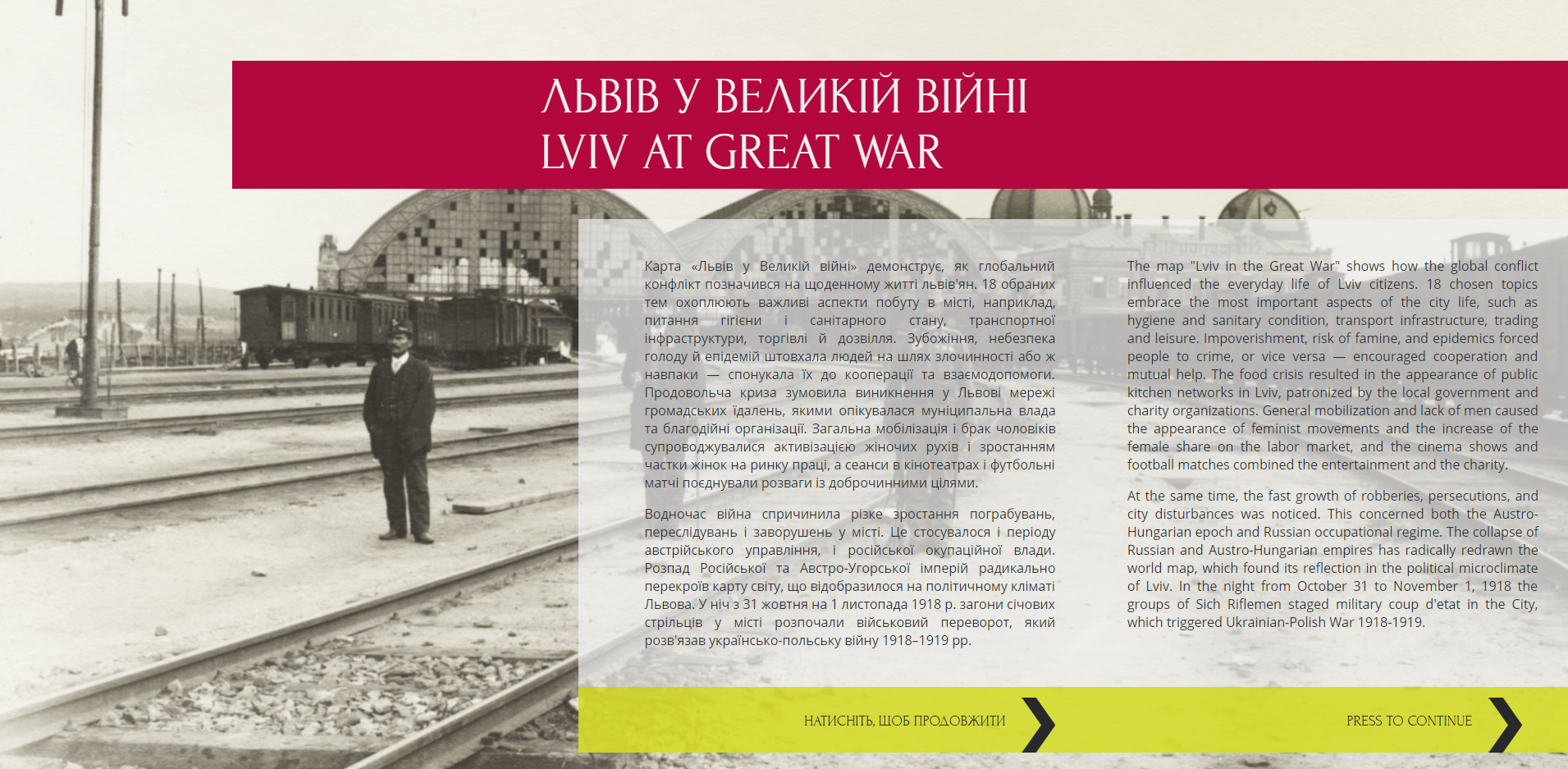
Lviv at Great War: Authors ID: 215
The map was prepared as a part of an exhibition project about the First World War at the Center for Urban History (December 24, 2014 - July 24, 2016)
Story
The First World War struck a devastating blow on the developments and infrastructure of cities, thus affecting everyday routines of the citizens. Cities located on the front line suffered huge destruction due to the warfare and plundering. Belgian Ypres, French Verdun and Albert, where the bloodiest battles of the Western Front rushed, were left in tatters. Many cities outside the front also suffered from the heavy aerial bombardment.
Before the start of the First World War in August, 1914, Lviv was capital to the crown land of Galicia. According to the 1910 census, the city had 206,113 residents, with 51% of Catholics, 28% of Jews, and 18% of Greek-Catholics. From September, 1914, until June, 1915, Lviv had been occupied by the forces of the Russian Empire and was part of General Government of Galicia and Bukovyna. Parallel to capitulation of Austro-Hungary in November, 1918, the city became an arena for armed conflict between Ukrainians and Poles (find more on November, 1918, events in Lviv on the map "City on the Line"). Upon signing the 1921 Peace of Riga, Lviv was seceded to Poland and became the capital of Lviv Voivodship.
During the First World War, Lviv stayed in close proximity to the front line. Local citizens lived in continuous stress. Military censorship radically restricted and distorted information on the developments in the fields. One could get to prison or face a firing squad on suspicion of disloyalty. Multiple groups of prisoners of war, the wounded, and refugees were passing through the railway station in Lviv. An influx of people and destitution affected the sanitary situation in the city, with frequent outbreaks of diseases. Winter season was the hardest, people were suffering from low heating and scarce food supply. One of the ways to overcome hardships and psychological trauma caused by the war was charity, and also entertainment, such as theaters, casinos, cinemas, concerts, and sports. The map "Lviv in the Great War" shows how the global conflict left an imprint on everyday life of Lvivians.
The map was developed within a larger exhibition project "Great War 1914 - ... Individual and Global Experiences" that was implemented at the Center for Urban History (December 24, 2014, - July, 24, 2016).
